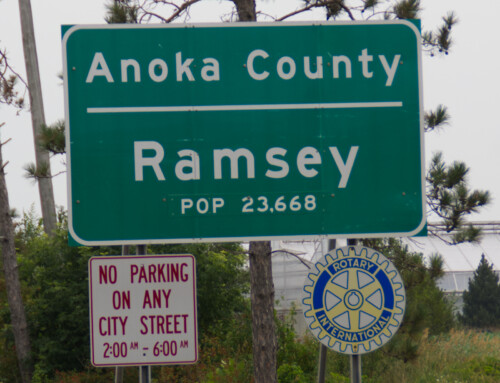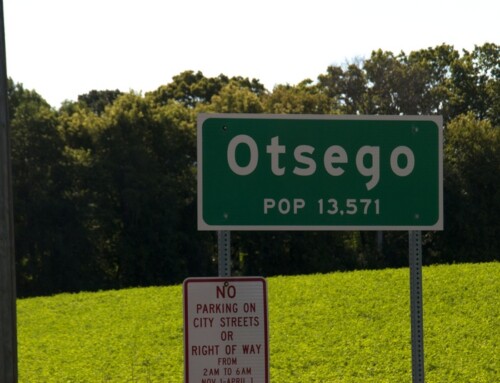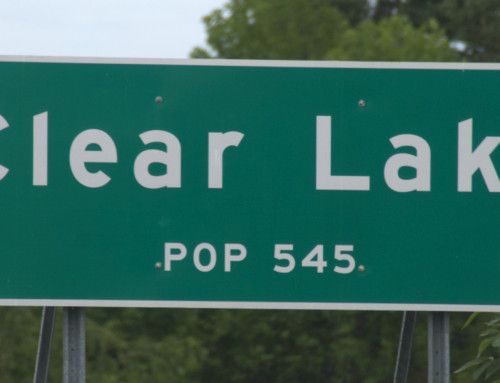History
The first Europeans to move into the area were the soldiers at the Cantonment of New Hope, who wintered here before Fort Snelling was built. They were followed by folks who were involved in the fur trade, primarily discontented French Canadians and Metis who had left Selkirk’s colony at Fort Garry (Winnipeg). Among those early settlers was Alexis Bailly, who ran a trading post for eight years beginning in 1826. The new settlement, called St. Peter until 1837 when the name was changed to Mendota, would eventually attract nearly 250 refugees from Fort Garry, although many didn’t stay long. While discontent with Selkirk motivated many folks to resettle, others were driven away by the Red River flood of 1826 or by the drought and grasshopper plagues that made farming too challenging.
The American Fur Company set up a fur trading center at Mendota in 1834; Henry Hastings Sibley, then just 23 years old, managed it. He had left his native Detroit five years earlier in search of a more exciting life on the frontier. In 1839, while living at the post, he married a Dakota woman known as Red Blanket Woman; they had a daughter, Helen (also called Wahkiyee, or Bird). Few details about his relationship with Red Blanket Woman were written down, but it apparently ended around 1842. Henry went on to marry Sarah Jane Steele in 1843, the daughter of Fort Snelling’s commander, General James Steele, and brother of Minneapolis’s Franklin Steele. Sibley would later serve as the state’s first state governor, as well as the boards of various civic organizations and corporations. He placed his first daughter, Helen, with a missionary family but remained a part of her life until she died in 1859.
The trading post was in a strategic location that benefited from the protection provided by Fort Snelling and from being the early terminus of the Red River Ox Cart Trail. That post moved a lot of pelts. In 1835 alone, they acquired 289,000 muskrat pelts, far and away the most of any animal. As the primary settlement outside of Fort Snelling, Mendota was also the social center for the region and was the only place to get supplies like meat, tea, and flour.
Mendota’s early prospects were cut short as St. Paul rose to prominence. The trading post was moved to St. Paul in 1849, shifting the terminus of the ox cart trail to that city. Mendota nearly got the state capitol (see St. Paul), but when they lost that battle, the village lost much of its population and social life.
A small community endured, however. Mendota served as county seat from 1854 to 1857 before it was moved downriver to Hastings. A ferry operated across the river from 1825 to 1926. During the Civil War, Mendota was a popular party town for soldiers and their friends, something that was annoying enough to residents of the town that some moved away.
Esdras Bernier ran a large onion farm for some 30 years beginning in the 1880s, earning him the nickname “Bernie the Onion King.” He used Sibley’s old fur trading complex to warehouse his crop. In 1910, the Daughters of the American Revolution (DAR) purchased the Sibley property and began restoration work. For years, the DAR ran a popular restaurant and tea house in the building.
Exploring the Area
The Sibley House Historic Site (1357 Sibley Memorial Highway; 651.452.1596) pays homage to the fur trade era by preserving the old trading post and private residences from that era, including Sibley’s home.
High above the confluence of the Mississippi and Minnesota Rivers, Oheyawahi (a hill much visited), is a place where native peoples—Dakota, Ojibwe, and Ioway—assembled for ceremonies that celebrated life and marked death. In 1851, the Dakota signed a treaty at this site that ceded much of their land west of the Mississippi River. Today, the spot is known also as Pilot Knob (2044 Pilot Knob Rd.) and is a preserve with great views where oak savanna restoration is progressing nicely.
The Mississippi National River and Recreation (651.290.4160) runs for 72 miles through the Twin Cities. While the National Park Service owns very little land along the corridor, it has many programs to help connect people to the river. Visit their website for a complete listing of places to enjoy the river.
See the Twin Cities Overview for tips on festivals, getting around, and more.
**Mendota is covered in Road Tripping Along the Great River Road, Vol. 1. Click the link above for more.Disclosure: This website may be compensated for linking to other sites or for sales of products we link to.
Community-supported writing
If you like the content at the Mississippi Valley Traveler, please consider showing your support by making a one-time contribution or by subscribing through Patreon. Book sales don’t fully cover my costs, and I don’t have deep corporate pockets bankrolling my work. I’m a freelance writer bringing you stories about life along the Mississippi River. I need your help to keep this going. Every dollar you contribute makes it possible for me to continue sharing stories about America’s Greatest River!
©Dean Klinkenberg, 2024, 2021, 2018,2013,2011






